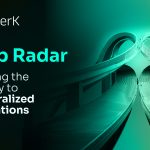There are two ways to generate new cryptocurrencies, making them available in the crypto market: minting and mining. However, the meaning, nuances, and implications of these terms are often interchanged, if not misunderstood. Both are instrumental in introducing new cryptocurrencies into the market, yet they differ fundamentally in their operations and impacts.
What is Crypto Minting?
Crypto minting is the process of generating new coins within a blockchain network. This method is foundational to cryptocurrencies, helping expand digital currency supplies and spur innovation. The term itself borrows from the traditional way physical coins are created, though in the digital realm, this involves using cryptographic algorithms and consensus mechanisms rather than metal and machinery.
Process and Platforms
Minting occurs on various blockchain networks, notably on Proof of Stake (PoS) systems like Ethereum. Validators in these networks mint new coins by staking existing holdings and participating in block creation, with rewards proportional to their contributions. Platforms such as Ethereum and Binance Smart Chain are popular for minting, especially for creating Non-Fungible Tokens (NFTs) that further diversify the blockchain landscape.
What is Crypto Mining?
Crypto mining involves the extraction and generation of new cryptocurrency tokens through computational efforts. Pioneered by Satoshi Nakamoto with Bitcoin, mining mirrors the extraction of resources like gold — hence the term. Miners solve complex mathematical puzzles using substantial computational power, contributing to the network’s security by validating transactions and adding them to the blockchain’s immutable ledger.
Mechanics and Global Reach
Mining primarily takes place in Proof of Work (PoW) systems, where the first miner to solve the puzzle may add a new block to the chain, earning newly minted coins and transaction fees. This activity requires significant hardware and energy, with operations often located in regions where electricity is cheap and abundant, such as parts of China and the United States.
Key Differences
Environmental Impact
One of the stark differences in the minting vs mining debate is their environmental impact. Mining, especially in PoW networks, is energy-intensive and has been criticized for its substantial carbon footprint. Conversely, minting in PoS networks like Ethereum 2.0 is designed to be much more energy-efficient.
Entry Barriers and Costs
Crypto minting generally has lower entry barriers, requiring participants to stake digital assets rather than invest in expensive mining rigs. This makes minting more accessible and less capital-intensive compared to mining, which demands specialized hardware and considerable electricity, posing a high entry barrier.
Reward Structure and Security
The reward mechanisms also differ significantly between minting vs mining. Mining rewards can fluctuate widely, affected by factors like network difficulty and hash rate, whereas minting rewards are more predictable and often based on the staked amount. Furthermore, minting offers increased security advantages, reducing risks such as the 51% attacks more common in PoW systems.
Different but Equally Vital
Both minting and mining play crucial roles in maintaining and expanding the crypto ecosystem, offering avenues for earning and contributing to blockchain networks. However, they cater to different user profiles based on technical expertise, resource availability, and environmental concerns. Understanding the minting vs mining dynamic is vital for anyone looking to engage with digital currencies, whether for trading purposes or as a participant in the underlying technology.
About LayerK
LayerK is a tech company that combines state-of-the-art hardware and innovative software to empower individuals and businesses to become participants in tomorrow’s digital economy. Our cutting-edge solutions leverage advanced computing and blockchain technology to pave the way for a future of individual independence.
Learn more about the LayerK ecosystem by visiting our website or following us on our social media accounts.
Website 🔗 https://layerk.com/
Telegram | Facebook | Instagram | Twitter | YouTube
Disclaimer: This blog combines insights from both human expertise and AI technology to provide informational content. It is not intended as financial or investment advice. Given the volatile nature of virtual assets, investments carry high risks, including the potential for substantial losses. Past performance is not indicative of future results. Readers are encouraged to conduct their own research, perform due diligence, and consult a financial advisor before making any investment decisions. LayerK is not responsible for any losses you may incur from using this information.






100 USDT
November 27, 2024Thanks for sharing. I read many of your blog posts, cool, your blog is very good.